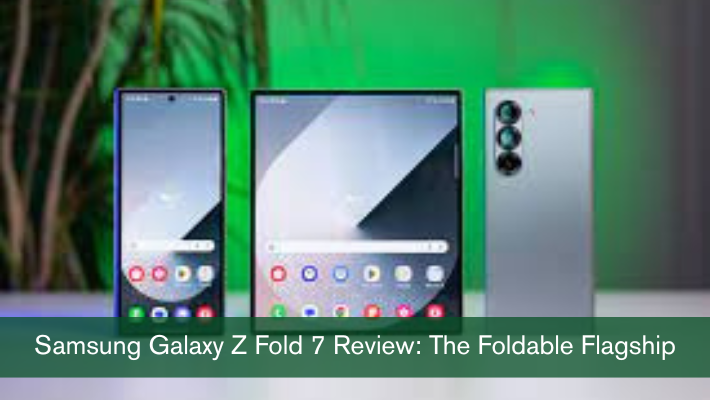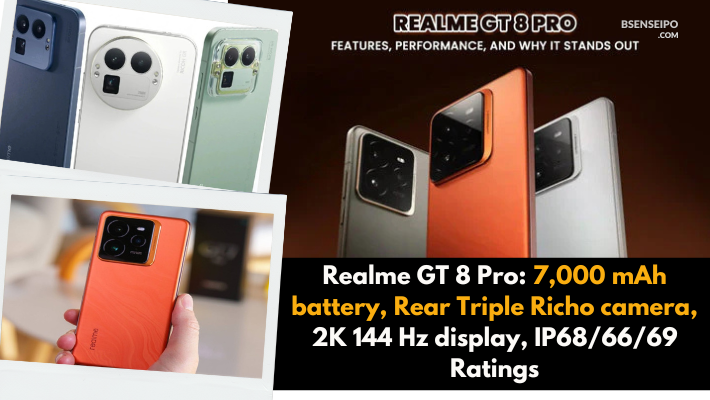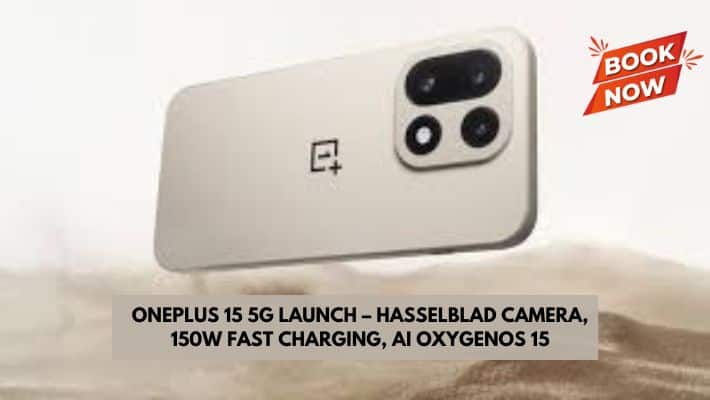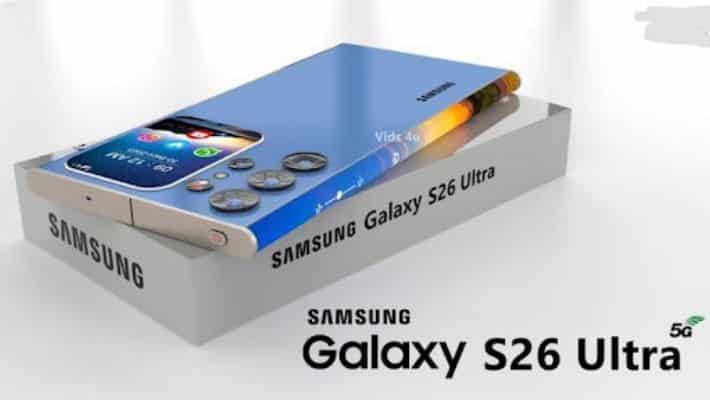Samsung Galaxy Z Fold 7 Review: The Foldable Flagship That Finally Clicks
Samsung’s latest foldable, the Galaxy Z Fold 7, arrives with high expectations: thinner, lighter, more capable, and more “normal phone–like” than ever before. After several years of incremental improvements, does this version finally justify the hype — or is it still a niche luxury? We spent real time using it, testing its strengths and limits, to see if this is the foldable to buy in 2025.
Design & Build Quality
Slimmer, lighter, more refined
One of the first things you notice is how much slimmer the Fold 7 is compared to its predecessors. It’s 8.9 mm thick when folded, and just 4.2 mm when open, versus more bulky profiles in prior editions.
With a weight of ≈ 215 g, it’s notably lighter than earlier Folds and even lighter than some large slab phones (e.g. iPhone Pro Max models) in your hand.
The engineering trade-off was clear: Samsung removed the S Pen support (i.e. they dropped the digitizer layer) to achieve the thinner profile. That decision is controversial: for many, the Fold’s appeal was pen input.
The hinge and frame see upgrades too: Samsung uses enhanced structural elements (e.g. stronger Armor materials) and tighter tolerances to reduce flex and minimize the fold gap.
Reviewers report the open/close feel is smooth and stable, and there’s minimal gap when folded.
However, a few minor complaints remain: because it’s thinner, opening the phone can require a bit more grip effort. Some users wish there were a notch or indentation to help.
Also, a few early users report paint-chipping off around buttons or edges (even without dropping), which raises questions about long-term finish durability.
Durability & ingress protection
Samsung rates the device with IP48 for water/dust resistance, which helps it stand up to splashes and dust intrusion.
The materials include Gorilla Glass Ceramic 2 on the cover screen, Gorilla Glass Victus 2 on the back, and a reinforced aluminum frame.
Still, foldables remain more delicate than rigid smartphones, so hinge wear, screen crease, or finish peeling remain perennial concerns.
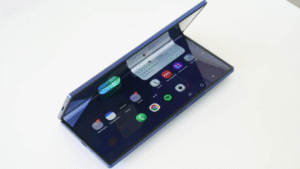
Display & Multimedia Experience
Cover screen
Samsung slightly widened and refined the cover display. Now it measures 6.5 inches, with 120 Hz refresh rate, narrower bezels, and improved usability for one-hand scenarios.
Many users said they used the cover screen for 70–80% of daily tasks like messaging, email, social media, while reserving the inner screen for heavier multitasking.
Inner (unfolded) tablet screen
Opening it reveals a generous 8.0-inch Dynamic AMOLED (QXGA+), also 120 Hz, with high peak brightness (especially outdoors) and better visibility with polarised sunglasses.
The increased size (vs prior models) enhances productivity: reviewers report comfortably running 2–3 apps side by side (multiwindow), dragging content, etc.
Moreover, Samsung enhances outdoor visibility and reduces reflection, making it more usable in sunlight.
One caveat: some apps (especially third-party ones) are not fully optimized yet for the foldable aspect ratio or multiwindow behavior.
Performance, Software & AI
Chipset, memory & storage
Under the hood is Samsung’s tuned Snapdragon 8 Elite for Galaxy (3 nm), paired with 12 GB or 16 GB RAM and storage choices from 256 GB up to 1 TB.
In both benchmarks and real-world use, the Fold 7 feels extremely fluid: app launches, switching, multitasking — no noticeable lag.
It’s not quite matching the absolute peak of the Galaxy S25 Ultra (in some thermal-constrained scenarios) due to the thinner chassis, but the difference is marginal for most users.
Software, UI & features
The phone ships with Android 16 + One UI 8. Samsung promises 7 years of OS and security updates.
One UI 8 includes fold-aware UI features: improved multitasking, drag-and-drop across windows, app continuity when unfolding, adaptive layouts, etc.
Samsung has also leaned into Galaxy AI / Gemini integrations: e.g. AI editing tools, content generation, translation, screen sharing based on context.
Reviewers say these AI features enhance the experience, though in many cases they feel like supplementary conveniences rather than core differentiators.
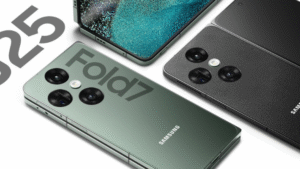
Camera System
Specs & hardware
The Fold 7’s highlight is adopting the 200 MP main sensor (same as in Galaxy S25 Ultra) for the first time in a foldable.
It retains a 12 MP ultrawide and a 10 MP 3× telephoto lens.
On the selfie side, the inner camera moves away from under-display to a 10 MP punch-hole, which improves clarity.
Samsung also provides the Expert RAW app for more control over imaging parameters.
Photo & video quality
In good lighting, the main camera is excellent — sharp, dynamic, good color fidelity — nearly matching the S25 Ultra in many scenarios.
Low-light performance is improved over prior Folds but not perfect; noise and softening creep in under tougher conditions.
The 3× telephoto is useful, but does not match periscope zooms found in some rival flagships.
Video recording is strong: stabilization, color, and dynamic range are all good, though in extreme low-light situations some loss is visible.
Battery Life & Charging
The Fold 7 retains a 4,400 mAh battery (same capacity as previous generation) but benefits from more efficient chipset and software optimizations.
In mixed usage (cover screen + inner screen, messaging, browsing, light gaming), it comfortably lasts a full day, sometimes into the second.
Still, heavy users (full-time video, gaming, max brightness) will need charging by evening.
Charging is modest: 25 W wired and 15 W wireless — not exceptional by modern flagship standards.
Some reviewers express disappointment that Samsung didn’t push faster charging given the high price point.
Comparisons & Competition
- vs Galaxy Z Fold 6: The Fold 7 corrects many critiques — much thinner/lighter, better chipset, superior main camera, refined hinge, better display usability.
- vs Galaxy S25 Ultra / traditional flagships: While S25 Ultra may have slight edge in some performance or optical zooms, Fold 7 offers flexibility (foldable display, multitasking) that bar phones can’t match.
- vs competitors (Pixel foldables, OPPO, OnePlus, etc.): Samsung’s foldable portfolio is more mature; the Fold 7’s build quality, software polish, and feature set remain competitive. Some rivals may offer exotic camera or fold designs, but Samsung’s ecosystem and refinement often give it an edge.
Pros & Cons (Summary)
| ✅ Strengths | ⚠️ Weaknesses / Tradeoffs |
|---|---|
| Ultra-thin, lighter design | No S Pen support (for many, a loss) |
| Premium build and improved hinge | Paint peeling reports in early units |
| Excellent performance & multitasking | Charging speed is mediocre |
| Flagship-level 200 MP main camera | Telephoto not class-leading |
| Rich AI / software features | Durability of foldables always a risk |
| Cover + full inner screens are well-balanced | Some apps not fully optimized for fold form |
Verdict
The Samsung Galaxy Z Fold 7 is a milestone in foldable smartphone evolution. It refines and improves nearly every aspect of its predecessors: slimmer and lighter design, stronger camera hardware, smarter software, and a smoother fold experience.
While it isn’t perfect — the absence of S Pen, modest charging rates, and durability concerns remain — the Fold 7 strikes the best balance yet between practicality and novelty. If you’re a power user who wants cutting-edge multitasking in a single device and are willing to pay a premium, the Fold 7 is arguably the foldable to get in 2025.
However, if your priorities lean heavily toward battery “all-day + more,” or you rely heavily on pen input, you might still weigh alternatives.

